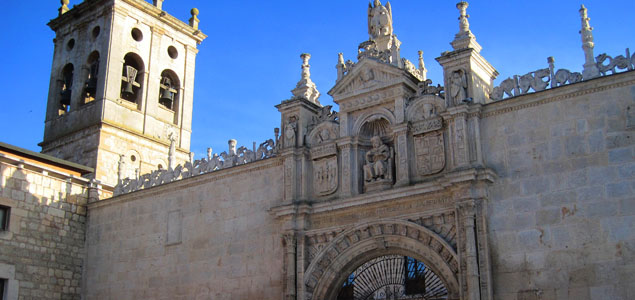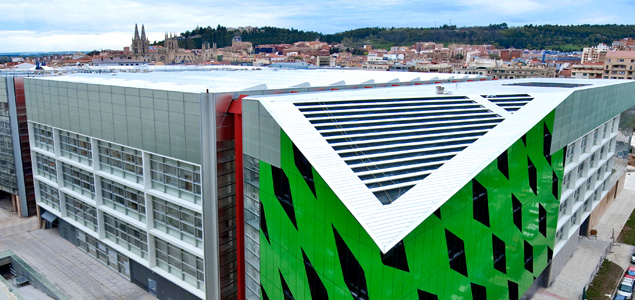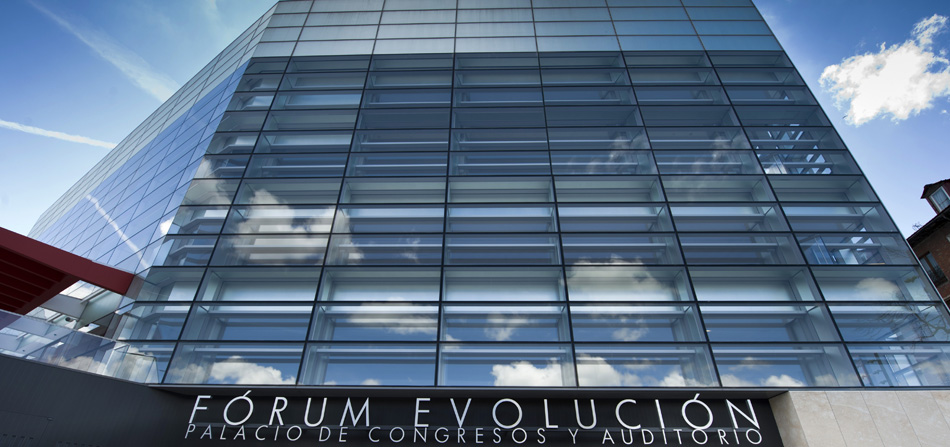The Museum and its environment
The Human Evolution Museum, inaugurated in July of 2010, acts as the headquarters for the 'Integrated Atapuerca Knowledgebase', a managerial instrument in charge of administering and coordinating the different teams, centers, services and departments working together on the Atapuerca Project. The University of Burgos and the Atapuerca Foundation, as centers associated with this knowledgebase, play a supporting role at the Human Evolution Museum and in the Atapuerca Project.
The Atapuerca Foundation
The Foundation was created in July of 1999 to back the research being carried out in the Atapuerca Mountains and to ensure that the archaeological site received the scientific, cultural and social recognition that it deserved as a World Heritage Site. Directed by Mr. Eudald Carbonell, a member of the Atapuerca Research Team, the Foundation also aides in teaching the public about Atapuerca and helps with the management of visitors and tourists. Finally, it promotes community involvement to help the Atapuerca Site gain strength and recognition worldwide.
For more information about the Atapuerca Foundation, please visit:
Universidad de Burgos
 The University of Burgos is involved in the Sierra de Atapuerca research projects through the Prehistory and Palaeontology Areas of the History Department and the Atapuerca laboratories in the R+D+I Building. It is also involved in joint research projects and activities covered by the Atapuerca System, and provides technical support for site and visitor management in aspects such as planning, environment, socio-economic development and planning, as well as the dissemination and explanation of our cultural heritage.
The University of Burgos is involved in the Sierra de Atapuerca research projects through the Prehistory and Palaeontology Areas of the History Department and the Atapuerca laboratories in the R+D+I Building. It is also involved in joint research projects and activities covered by the Atapuerca System, and provides technical support for site and visitor management in aspects such as planning, environment, socio-economic development and planning, as well as the dissemination and explanation of our cultural heritage.
Evolution complex
In 2000, the archaeological site of the Sierra de Atapuerca joined the list of UNESCO Heritage sites. After that, the government promoted the construction of the Human Evolution Complex in Burgos: three independent but interdependent buildings, physically separate but linked functionally and managed by different public administrations (national, regional and local) with the common goal of investigating and spreading knowledge.
The complex consists of:
- The Museum of Human Evolution, the cornerstone of the project.
- National Research Centre on Human Evolution (CENIEH).
- Auditorium and Congress 'Forum Evolución Burgos'.
CENIEH

The Spanish National Research Center for Human Evolution (known by its acronym in Spanish, CENIEH) was officially inaugurated in July of 2009 and is situated just to the left of the Human Evolution Museum. It is the "dream come true" of the Atapuerca Research Team. This center, which forms part of the Integrated Atapuerca Knowledgebase, is world-renowned because of the technological equipment that it houses and the cutting-edge scientific investigation carried out within its walls.
Laboratories, multipurpose rooms, large, open spaces, and work zones have all been designed to facilitate multidisciplinary research within the field of human evolution from different perspectives: the biochronological, paleoecological, geological, and technological, among others. In addition, this center drives and leads research projects at archaeological sites both within Spain and outside in countries located in Africa and Eurasia.
The CENIEH also proudly houses laboratories and storage facilities for the conservation, restoration, management, and registry of paleontological and archaeological collections coming from excavation at Atapuerca and other archaeological and paleontological sites of the Pliocene and Pleistocene periods. The center is directed by María Martinón, a member of the Atapuerca Research team, and has a full staff of researchers and specialized laboratory technicians at its disposal.
For more information about the CENIEH, please visit:
Burgos evolution forum
The Burgos Auditorium and Conference Center, inaugurated in September of 2012, is located just to the right of the Human Evolution Museum and was constructed with the idea in mind of giving the city a place to hold national and international conferences as well as other social events like concerts and plays.
Of all the buildings that make up the Burgos Human Evolution Complex, this is the ideal place for conferences and scientific meetings.

This new, cultural space, also known as ‘Evolution Forum’, is a 35,000 m2 structure comprised of the following parts:
A main auditorium with a capacity to seat 1,550 people. It houses - among other things - a large stage, an orchestra pit, an amphitheater, meeting rooms, press rooms and administrative offices.
A secondary auditorium with a capacity to seat 653 people, located on the northeastern side of the building.
An exposition hall with skylights to provide light. This space is distributed over the various floors.
Multi-purpose rooms.
Offices.
A coffee shop and restaurant.